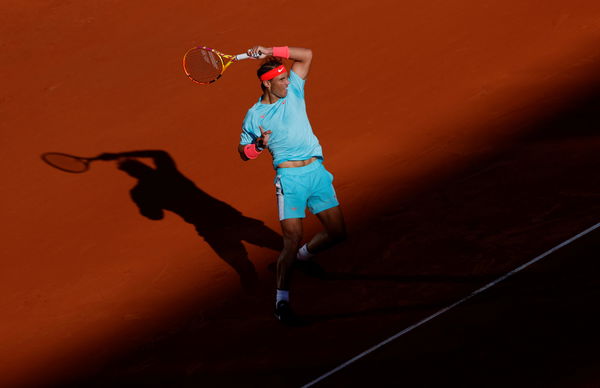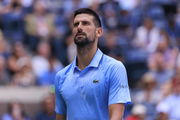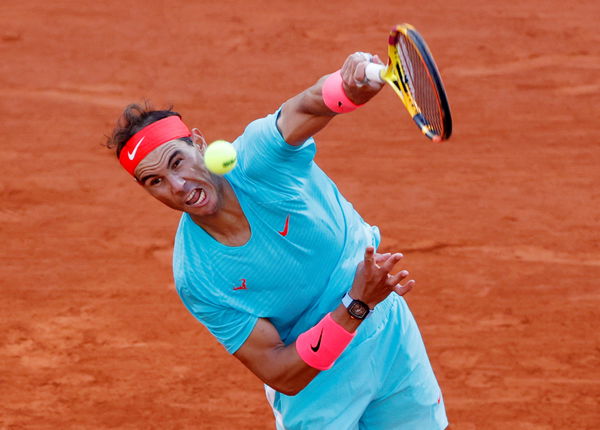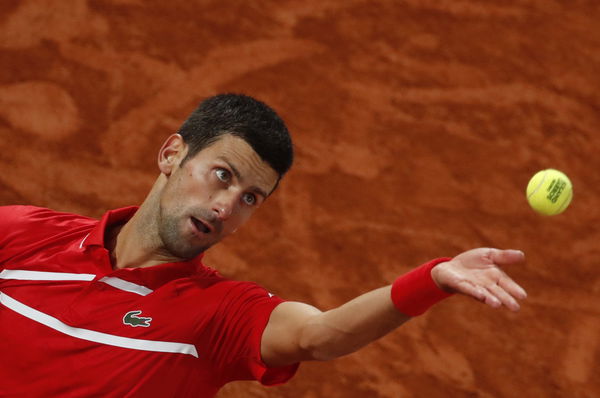
Reuters
Tennis – French Open – Roland Garros, Paris, France – Spain’s Rafael Nadal during his semi final match against Argentina’s Diego Schwartzman REUTERS/Charles Platiau

Reuters
Tennis – French Open – Roland Garros, Paris, France – Spain’s Rafael Nadal during his semi final match against Argentina’s Diego Schwartzman REUTERS/Charles Platiau
Despite the tumultuous year, the tennis fraternity is about to witness the most exciting showdown at the men’s French Open final. The 12-time champion Rafael Nadal takes on his biggest adversary, World No.1 Novak Djokovic, in arguably the most important match of their career.
Watch What’s Trending Now!
Nadal can become the first player to win 100 matches at Roland Garros and is a win away from equalling Roger Federer‘s tally of 20 Grand Slam titles. On the other side, Djokovic could become the first man in the Open Era to win each Grand Slam twice if he reigns at the French Open.
The No.1 seed could also achieve the elusive feat of defeating Nadal in the Roland Garros final. The Spaniard has a 12-0 record in the finals.
ADVERTISEMENT
Major win No. 2️⃣0️⃣ or 1️⃣8️⃣?
The stage is set for a final with historic implications 👇#RolandGarros
— Roland-Garros (@rolandgarros) October 11, 2020
Let us look at the areas where Nadal will need to be consistent to triumph on his beloved surface for a record 13th time.
ADVERTISEMENT
Rafael Nadal Forehand
This is undoubtedly Nadal’s biggest weapon, and he will need to be aggressive with his forehand returns to push Djokovic back in the court. In recent years, we have seen Nadal’s powerful down-the-line forehand offsetting Djokovic’s position on the court.

Reuters
Tennis – French Open – Roland Garros, Paris, France – Spain’s Rafael Nadal in action during his semi-final match against Argentina’s Diego Schwartzman REUTERS/Christian Hartmann
Considering the different conditions, Nadal might be unable to generate the high bounce off the court surface and will need to hit deeper to trouble Djokovic. The 19-time Grand Slam champion showed brilliance with his forehand returns in his semifinal match against Diego Schwartzman and will have to hit wide angles to keep Djokovic guessing.
ADVERTISEMENT
Nadal’s Court Positioning
The cold and damp conditions have resulted in players executing the drop shots more often, owing to the slowness of the surface. Djokovic especially used the drop shot to his advantage against Pablo Carreno Busta and in the semifinals against Stefanos Tsitsipas.
ADVERTISEMENT
Nadal will have to play closer to the baseline to maneuver on the court smoothly and sprint to the net to chase down drop shots. Unfortunately, the 34-year-old is no longer as agile on the court and needs to fire up those blistering cross-court backhands to convert defense to offense, which he hasn’t been able to execute well unit now.
Top Stories
Tennis World Grieves After Tragic Incident at Bondi Beach, Australia

ATP Forced Into Action After Players Raise Serious On-Court Safety Concerns

Stefanos Tsitsipas Breaks Silence As Family Twist Emerges in Serious Off-Court Drama

Nick Kyrgios’ Australian Open Wildcard Hangs in the Balance as Uncertainty Looms Large

Novak Djokovic Makes a Bold Coaching Move As He Looks the Challenge Carlos Alcaraz & Jannik Sinner in 2026

First Serve Percentage

Reuters
Tennis – French Open – Roland Garros, Paris, France – Spain’s Rafael Nadal in action during his semi-final match against Argentina’s Diego Schwartzman REUTERS/Christian Hartmann
One of the reasons Nadal lost to Schwartzman at the Italian Open was the poor percentage of points he won on his first serves. The defending champion has to hit a high percentage of first serves inside to neutralize Djokovic’s phenomenal returns. The No.1 seed has often bothered Nadal with his wide-angled cross-court backhanded returns, and Nadal will have to improvise his service games to avoid trouble.
ADVERTISEMENT
Target Djokovic’s second serve

Reuters
Tennis – French Open – Roland Garros, Paris, France – Serbia’s Novak Djokovic in action during his semi-final match against Greece’s Stefanos Tsitsipas REUTERS/Gonzalo Fuentes
Because of neck and shoulder issues, the Serbian hasn’t been able to generate pace on his second serve. Djokovic’s points winning percentage on his second serve has dropped gradually during the tournament, and Nadal should exploit this area by tactically hitting his returns.
ADVERTISEMENT
The No.2 seed is a better volleyer than Djokovic and should come to the net more often to shorten up the rallies and win quick points. The duo will square off for a record 56th time in their careers. Djokovic leads the rivalry 29-26. However, Nadal has a lopsided 17-7 lead in their clay-court encounters.
ADVERTISEMENT
ADVERTISEMENT
ADVERTISEMENT

